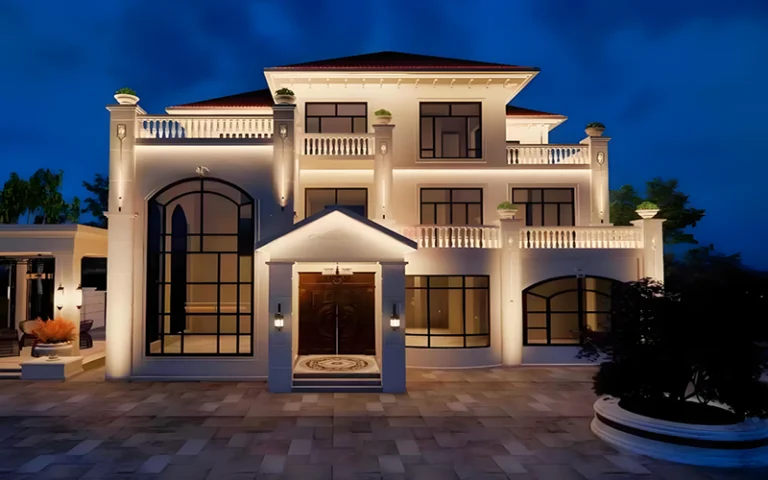What Are the Most Common Lighting Design Mistakes?
Lighting design is an important, yet often overlooked, factor for both indoor and outdoor spaces. People often think that LED lights are just for lighting, and at best they can change colors, but that’s it. Lighting design plays a vital role in shaping the mood, functionality, and overall aesthetic of a space. Whether you’re designing a comfortable living room, an efficient workspace, or a stylish bedroom, effective lighting can take your interior design to new heights. However, common lighting design mistakes can undermine your efforts and create an unpleasant or inefficient environment.
What Lighting Design Mistakes Can Be Avoided?
Lighting design is actually an important point, but we often overlook its importance. Now we can analyze some lighting mistakes that can be avoided to cover and improve the quality of our lighting. For the home lighting design, pls read How Is Lighting Design Used in Homes?
Too Much Use of a Single Light Source
One of the most common lighting design mistakes we see is relying on only a single light source, such as a ceiling-mounted fixture. This results in a flat, one-dimensional lighting scheme that lacks depth and atmosphere.
So, in order to create a more dynamic and attractive space. It is important to combine multiple light sources in your indoor or outdoor lighting design, including ambient light, task light, and accent lighting.
For example, in a living room, consider adding LED strip lights for the ceiling, floor lamps, wall lamps, or table lamps to create a balanced, comfortable light.
Ignore the Choice of Light Color Temperature
Measured in Kelvin (K), light color temperature affects the mood and atmosphere of a space. The most popular choice now is warm color temperatures (2700K-3000K) that create a cozy and welcoming atmosphere. Cool color temperatures (4000K-6500K) are more energizing and perfect for task-oriented spaces.
- Warm White: Like 2700K and 3000K, warm light is perfect for living rooms, bedrooms, and dining areas. For the bedroom lighting design, pls read 12 Tips for Bedroom Lighting Design
- Cool White: The main representative color is 4000K, which is a neutral color temperature. It is mainly used for task lighting. Perfect for task lighting, more suitable for kitchens, bathrooms and home offices.
- Daylight: Then we have to mention 6000K, which is a cold light with a blue tint. It is mainly used for garage lighting and production lighting.
Using Disproportionate Lighting Fixtures
The lighting fixtures for the space need to be selected based on the space of the room. The size and proportion of the lighting fixtures should be proportional to the size of the room.
A fixture that is too large will take up a small space, while a fixture that is too small may not provide enough lighting. So when choosing lighting fixtures, consider the ceiling height, room size, and desired atmosphere.
Ignore Lighting Controls and Dimming Features
It’s best to choose lamps that can be dimmed. Dimmers provide flexibility and control over light intensity, allowing you to adjust the mood and atmosphere of the space.
By incorporating dimmers into your lighting design, you can create a variety of settings, from bright and vibrant to soft and relaxing. There is also the addition of some modern smart control systems, which will be more convenient and easy to use.
Don’t Consider Light Placement and Shadows
The placement of light fixtures can significantly affect the overall look of the space. Improperly placed lights can create harsh shadows, glare, or uneven lighting. We need to avoid the following installation locations.
- Avoid placing lights directly above seating areas.
- Use wall-mounted fixtures to create indirect lighting.
- Experiment with different lighting angles to minimize shadows.
Overlooking the Importance of Accent Lighting
Accent lighting is essential for adding character and focus to a room, but is often overlooked. There are many types of accent lighting fixtures, such as spotlights, track lights, or wall-mounted fixtures, which can highlight artwork, architectural features, or other points of interest.
This type of lighting draws attention to specific areas, giving a room character and depth. Without accent lighting, a room can appear dull and lack visual appeal. Well-placed accent lighting can transform a space from merely functional to beautiful.
Neglecting the Impact of Natural Light
Natural light is a valuable asset in interior design. By maximizing natural light, you can reduce the need for artificial lighting during daylight hours, conserve energy, and improve your overall well-being. To harness the power of natural light, consider the following:
- Use sheer curtains or blinds to control the amount of light entering a room.
- Place mirrors strategically to reflect natural light.
- Install skylights to bring natural light into dark spaces.
Consult a Professional Lighting Designer
If you’re unsure about how to approach your lighting design project, consider consulting with a professional lighting designer. They can provide expert advice, create custom lighting plans, and help you achieve your desired lighting goals.
Summary
By understanding and addressing common interior lighting design mistakes, you can create beautiful and functional spaces. Consider factors such as light source, color temperature, and fixture selection. By paying attention to these details, you can transform your home or office into a well-lit, welcoming environment.
If you need to find high-quality LED strip lights and LED neon tubes, pls contact us.








